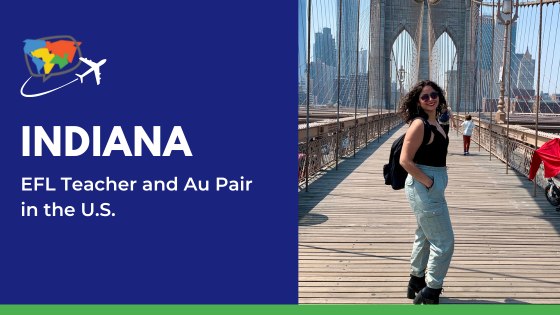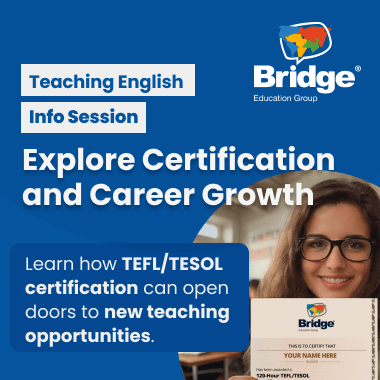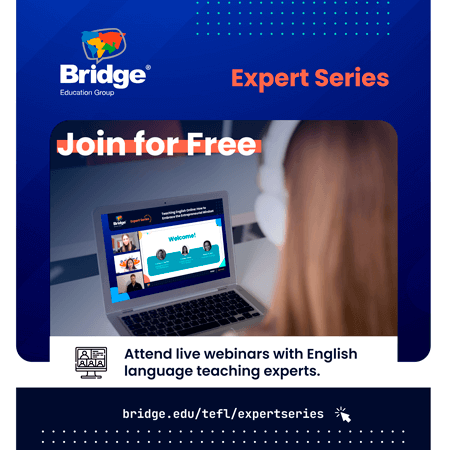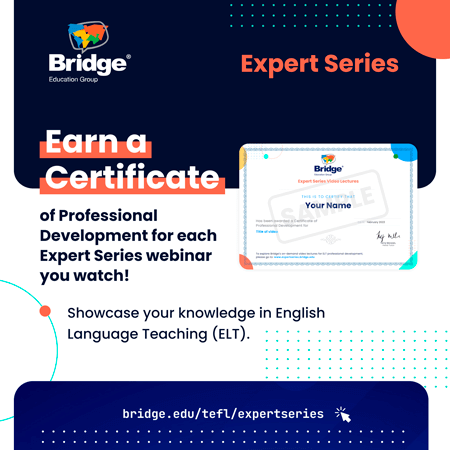In addition to new cultural experiences and fresh perspectives, Bridge grad Indiana Ricci, from Argentina, became an au pair in the U.S. as a way to gain the knowledge and skills necessary to become an English teacher. Currently teaching at a school in her home country, she recalls her first-time experiences living and working in the U.S. and how her au pair work and the CLIL Methodology Specialized Certificate helped her become a better English teacher.
New to TEFL? Get your initial training and qualification with a TEFL certificate. You can explore our online TEFL courses to get started!
Hi, Indiana! Can you tell us a bit about yourself?
I’m from Argentina and I live in Cordoba City. Before going to the U.S. last year, I was studying to become an English teacher here. Some teachers I talked with told me about their au pair experiences and what they learned when traveling abroad. Some went to the U.K., while others went to the U.S.
I discovered an au pair program, and I ended up becoming an au pair for a year and a half in California. It was an amazing experience living in the U.S. and being with kids. While there, I looked for TEFL/TESOL courses to continue improving my teaching skills.
What motivated you to be an au pair in the U.S.?
I studied English as a second language, but as I mentioned, my teachers had said that it’s important to not only improve our English proficiency but also to learn about English speakers and their cultures. My teachers would say, “You can’t teach what you haven’t lived.” So, you have to live it and then you can tell your students, “You can do this.” I decided that if I wanted to improve my English, I had to go immerse myself in the language and culture. I also always liked kids and I dreamed of becoming a teacher, so this was a good pathway for my future.
Read a comprehensive guide to becoming an au pair in the USA.
How did you prepare for the au pair program and what were the requirements of your agency?
I went to the U.S. with Cultural Care. The requirements are:
-
You have to be 18 to 26 years old when you apply for the program.
-
You have to be single.
-
You need to have a driver’s license.
-
You need to have a conversational level of English.
-
The main point of being an au pair in the U.S. is having to study something. Your host family is going to fund your studies so you can earn the credits you need for the J-1 Visa, which is a cultural exchange visa.
-
You need to complete at least 72 hours of coursework or earn at least six credits.
Looking for more information on au pair requirements? Read the article “Navigating Au Pair Classes: A Comprehensive Overview of Requirements” for an in-depth look at what you need.
Where did you complete your au pair program and who did you work with?
I stayed in Oakland, California, which is close to San Francisco. When I started the au pair program, I didn’t know that much about the U.S. I knew I didn’t want to be in a very cold place. I remember asking my friends, “Do you know where I want to go? Where the Sequoia trees are.” When my group arrived in the U.S., it was funny for us because it was like what we see in the movies – the highways, the fast food, the people. It felt like we were in a romantic comedy in the ’90s or like being on a Netflix show!
I found the perfect host family match in Oakland, and I took care of a baby girl named Jane. The family chose me when my host mom was pregnant. We started talking in November 2022, and she had a two-year-old toddler, Kyle, at the time. She told me that they had a baby coming and we started talking about my role in the family and my chores.
I remember one day while I was still in Argentina and going out with friends, she sent me a picture of baby Jane and I started crying because she was so little! I arrived in the U.S. when she was seven weeks old and Kyle, her brother, was two and a half years old. We spent tons of time together and it was so fun to watch her grow up.

What was your typical daily life like as an au pair?
Most days, from Monday to Friday, I stayed at home with the baby when she was very little. I had chores to do, like preparing breakfast and tidying up a bit. The kids would take a nap, and then I’d go to the park with them. I organized birthdays and play dates. Some people might think being an au pair sounds easy but you are running all day long! It’s also a lot of fun. It’s very heart-warming to see a tiny baby grow up. Baby Jane is now one and a half years old!
How was your experience living in California?
It was fun to stay in California! You have so many things to do on weekends. I remember we went everywhere – Tahoe, Yosemite, Los Angeles, Sequoia National Park. You have everything there, and it’s all so close by. I also remember we went to the Pride parade and it was so cool! It’s even better than the movies.
When you go outside your country and live abroad, you also learn because you’re living in a different culture, with a different language, with a different family, and in a different society. I highly recommend becoming an au pair because it changes your life. Although it’s not the same for every person, it’s great for every person.

What inspired you to become an English teacher?
I knew when I was young that I wanted to become a teacher. I originally thought I wanted to be a history or social studies teacher. My mom told me I was very good at English and that I should keep studying it. I thought, “Everyone knows English these days.” Then, I went to live in Brazil for a while and realized that I didn’t know any Portuguese. I had thought it was similar to Spanish. I ended up using a lot of my English there to communicate with people because there are a lot of tourists and many people speak English. This made me realize that English was very useful.
I started looking forward to studying English. I thought I could study ESL at the university I was attending, so I took the English proficiency test. It was tougher than I realized, and I needed to continue studying, but I liked it and knew I wanted to keep learning.
When I was in the second year of my career in 2022, I had an opportunity to teach English to teenagers at a school in Argentina. I was so nervous and started wondering, “Do I know enough? Am I ready for this? Am I prepared for this?” Because I’m not a native English speaker, I was always nervous. But it was the best experience of my life. I loved my students. My students and their parents were so grateful all the time. And that year, I decided I wanted to do this for the rest of my life.
So, I followed my teachers’ advice and went to the U.S., thinking that would be the best way to do it. I thought, “If I live in the U.S., I can tell my students that the study, experience, and connection are worth it.” It’s amazing how you meet so many people from around the world, like from Turkey, Italy, or Spain, and wherever you are, everyone speaks English. It’s a great way to connect with other people. Thinking about English as a way to communicate and connect was how I wanted to teach English, not just as a language, but as a way to communicate with people worldwide.
Read about strategies to teach English as a global language in the ESL classroom.
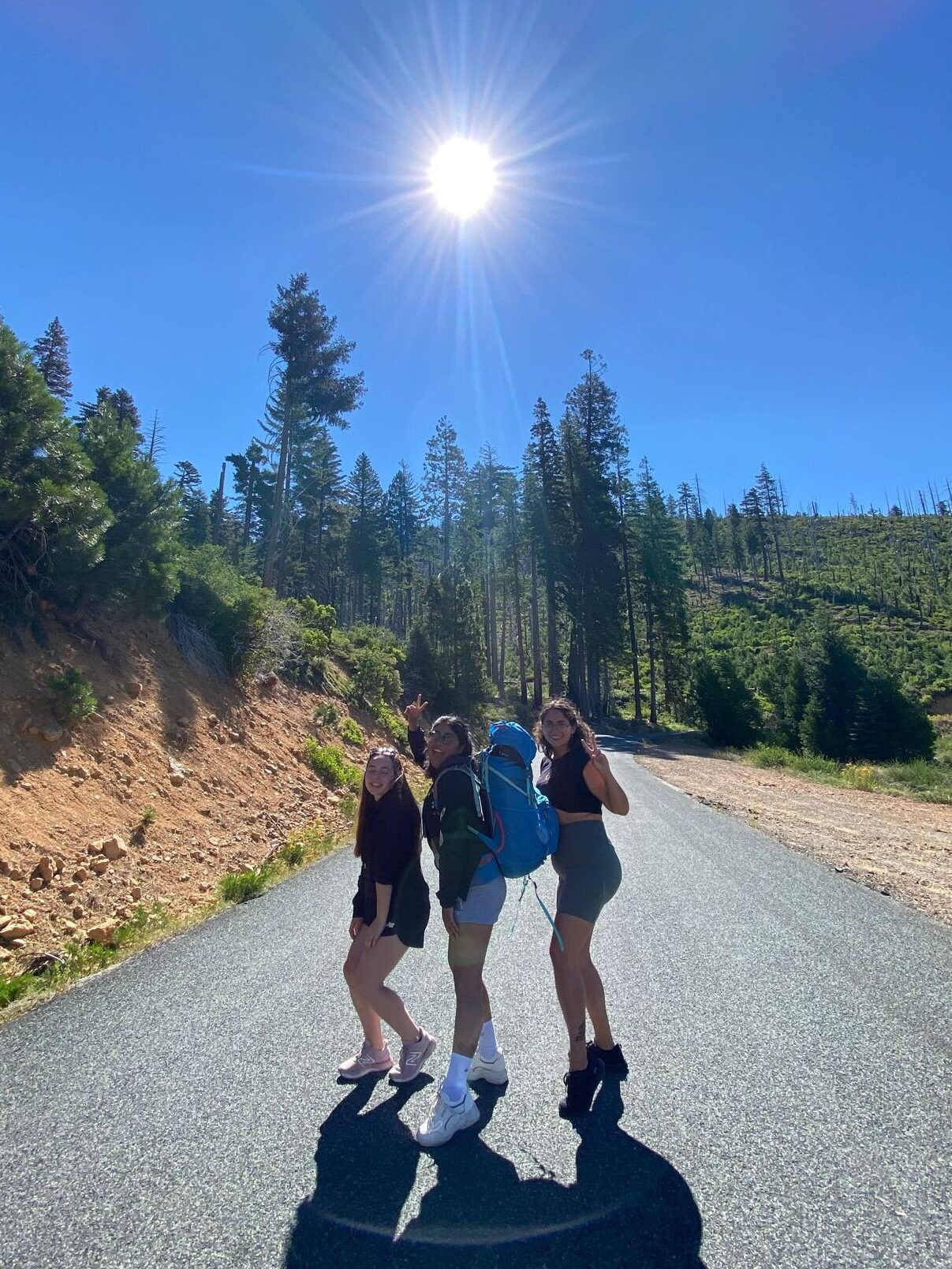
Where else have you taught English?
When I did my TEFL course back in the U.S., I had to do my practicum in 2023 through a platform called Tutoria, a volunteer system where people from around the world look for English teachers. I started teaching conversational English to adults, who were mostly people from Mexico living in the U.S.
Learn more about adding a teaching practicum to your online TEFL certification.
How do you think your au pair experience helped you as an English teacher?
The main thing you gain as an au pair is patience. It’s great because you learn teaching skills in a simplified setting. It’s not the same as when you have a classroom with 20 to 30 kids for a couple of hours and you’re doing fun activities. As an au pair, you are helping to raise a kid to fully develop as a person, and it’s a lot of work. You are trying to introduce them to the world, so you learn a lot about life. You also learn so much about how kids develop and learn.
When I was younger, the classroom was so different from now. Before, you had to be quiet and pay attention while the teacher was speaking. Now, when you work with little kids, you are focusing on them and understanding how they think. Being an au pair is a very helpful experience if you want to work with kids.
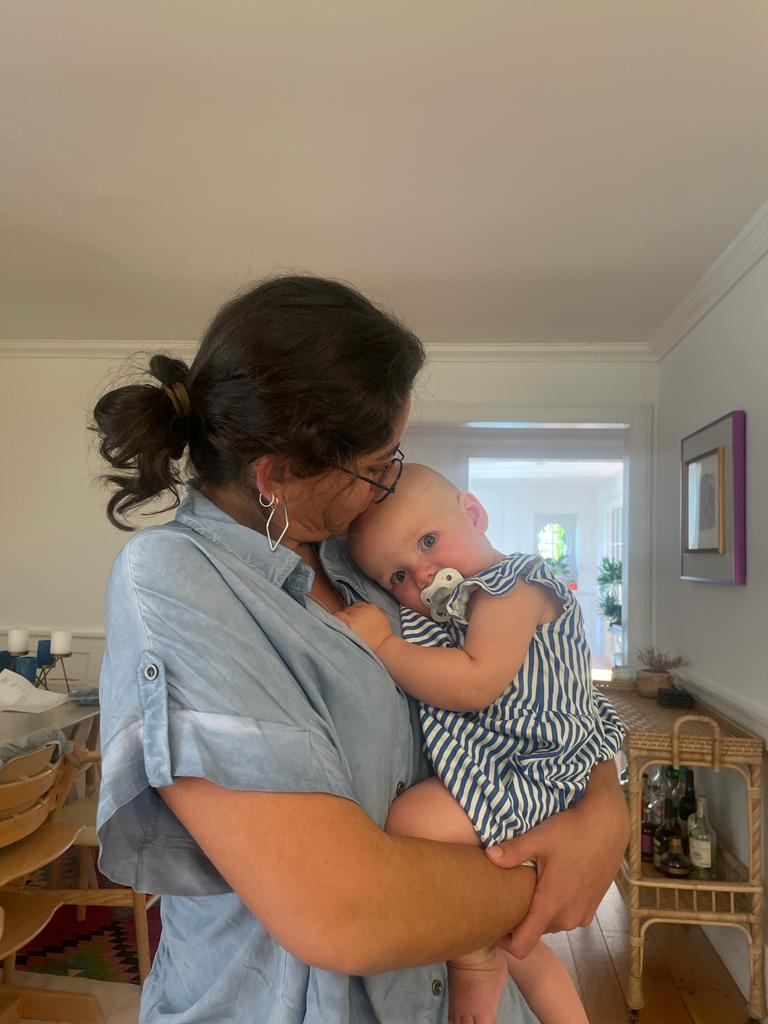
Why did you decide to take a TEFL/TESOL certification course?
As I was in the U.S. and I still had to keep working on my degree in teaching ESL, I thought the TEFL/TESOL certification would help me speed up the process. You can teach if you know English really well, but if you have a TEFL/TESOL certificate, you really know what you’re doing. I had also told a friend that I needed to earn my credits, and she recommended getting a TEFL/TESOL certification, which could also be useful for finding a job when I return to my home country.
It was great because I often talk with friends who are studying to become ESL teachers, and the online TEFL/TESOL course with Bridge was so helpful with lesson planning. We don’t have anything like that here, so I share my strategies with friends who struggle with activities and planning. I didn’t expect to learn about lesson planning in the course. I thought it was going to be about grammar and other things, but it was everything about your class and how you prepare the environment for your learners.
You took the Specialized Certificate in Teaching Using the CLIL Methodology. Why did you decide to take this Specialized Course?
Well, it’s something I’ve been talking about with other teachers and friends because here in Argentina, colleges have small faculties, like science and education, so we have teachers in different subjects. We were talking about how hard it is to teach teenagers when we only have two hours a week explaining a subject. Then, we started talking about what the CLIL methodology proposes. For example, if you’re talking about a history topic, then you keep talking about the same topic in English class, where I take the opportunity to use the topic to explain a grammar concept, like the present continuous. Then, the literature teacher does the same. All of us, as a group, keep talking about the same topic, applying it to our subjects, and our students do not think of the topic as something they have to study, but rather they’re surrounded by it.
After completing my initial TEFL certification, I wanted to study something different, and I found the CLIL Specialized course. I really enjoyed it!
Read about the benefits of CLIL in bilingual education.
What were your biggest takeaways from the course?
I learned that it’s important to prioritize not just the subject content or the language but to work on both the content and the language, which makes the learning experience even better. If you’re focused on just one topic, it gets boring. But if you work on everything as a whole, that’s what makes the CLIL methodology work. It’s also great that teachers can team up and work together.
What I also appreciated about the CLIL Methodology Specialized Certification course was that everything is practical and it prepares you for real-life teaching. It’s not just reading a thousand texts and then taking a test. Instead, you show you understand by applying course concepts in a lesson plan project, for example. That’s another reason I was so impressed with the course.
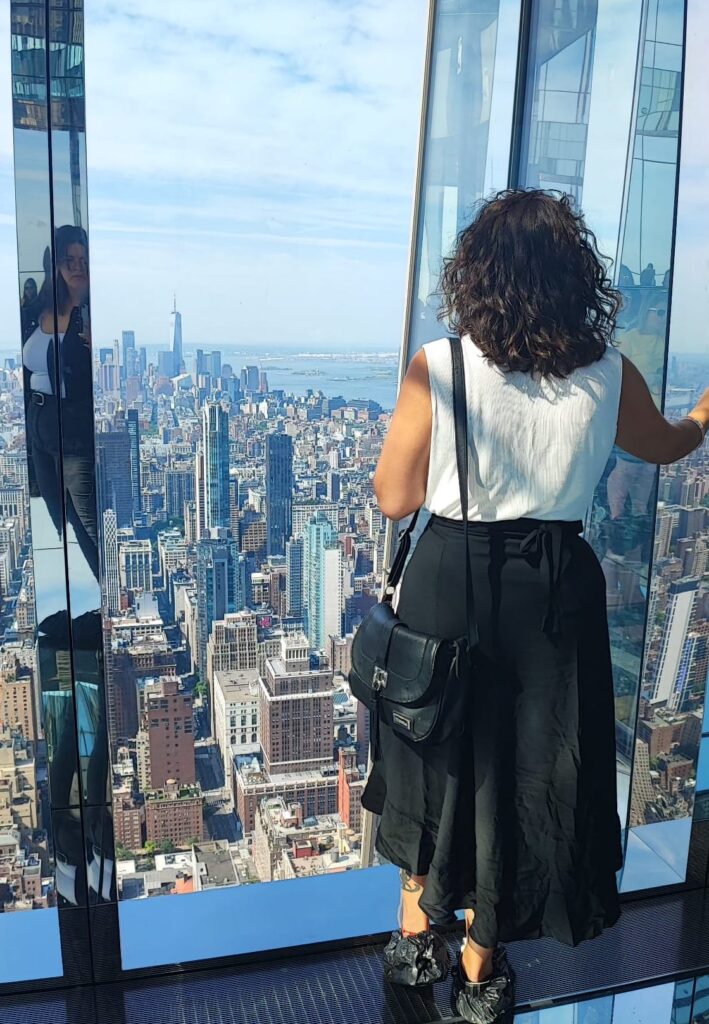
How did you manage to juggle your work as an au pair and your studies?
I enjoyed the courses because I was doing what I wanted. Even working nine hours a day, I found time because the kids took naps and I had my afternoons and weekends off. The courses also have videos, resources, and activities, so it’s easy to keep working through them. They are not text-heavy.
You’ve recently landed a new English teaching position at a school in your home country. Can you tell us more about your new job?
It’s a national school in Cordoba. I’m teaching young learners, who are kindergarten kids between four and five. I teach twice a week, Monday and Wednesday. I have these two beautiful groups that seem so energetic and sweet. I’m really happy and the school team is great. We are working with Macmillan materials and the principal sent me the books and activities. I’m super excited!

What are your goals as an English teacher?
I’d love to have a variety of students, like adults, teenagers, and elementary students. And I’d love to be teaching all day long. Here in Argentina, you don’t usually have 45 hours in one school with one group. You can be in many different schools. For example, you can have elementary and kindergarten classes at one school, and then in the afternoon, you can have Business English classes with adults. You can have a preference, but I love to have everybody. It’s so fun!
Learn about the essentials of teaching Business English online and in person.
What is your advice for au pairs who want to get into English teaching?
You learn so much as an au pair in the U.S. that will help you in English teaching. You learn about the culture and build language and teaching skills. After your experience, you can share what you learned and inspire other people that they can do it too.
I’d like to encourage au pairs to take a TEFL/TESOL course and become ESL teachers. It’s such a good experience. It’s not just an English course; it’s also a course that teaches communication and teaching strategies. You’ll love it!






